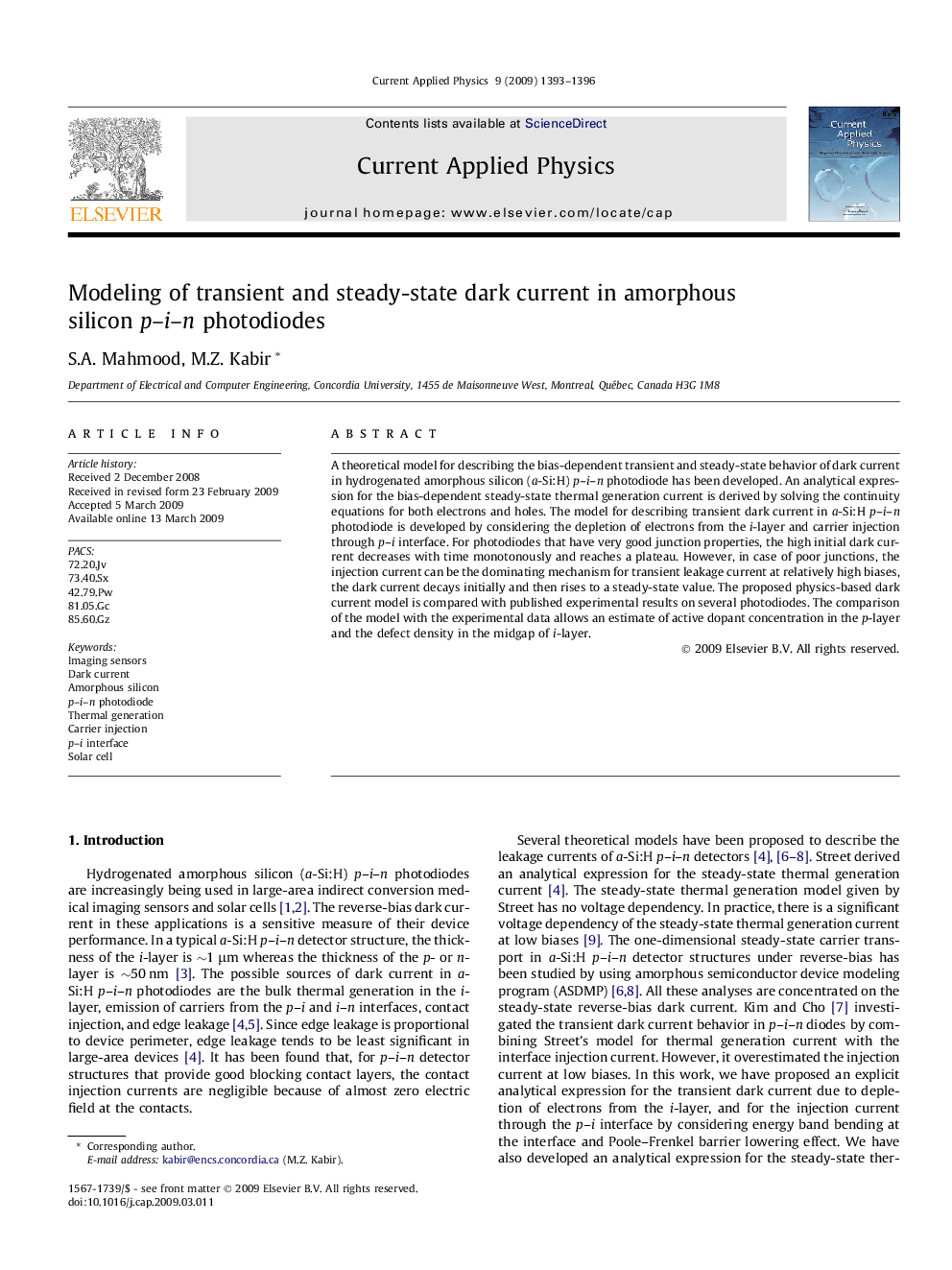| Article ID | Journal | Published Year | Pages | File Type |
|---|---|---|---|---|
| 1789084 | Current Applied Physics | 2009 | 4 Pages |
A theoretical model for describing the bias-dependent transient and steady-state behavior of dark current in hydrogenated amorphous silicon (a-Si:H) p–i–n photodiode has been developed. An analytical expression for the bias-dependent steady-state thermal generation current is derived by solving the continuity equations for both electrons and holes. The model for describing transient dark current in a-Si:H p–i–n photodiode is developed by considering the depletion of electrons from the i-layer and carrier injection through p–i interface. For photodiodes that have very good junction properties, the high initial dark current decreases with time monotonously and reaches a plateau. However, in case of poor junctions, the injection current can be the dominating mechanism for transient leakage current at relatively high biases, the dark current decays initially and then rises to a steady-state value. The proposed physics-based dark current model is compared with published experimental results on several photodiodes. The comparison of the model with the experimental data allows an estimate of active dopant concentration in the p-layer and the defect density in the midgap of i-layer.
